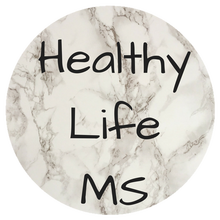Any physio, PT or exercise science researcher focused on using exercise as a tool to help manage chronic conditions will be aware of the latest edition of the 'ACSM Guidelines for Exercise Testing and Prescription': this little book is one of my most used and dog-eared resources. There are exercise prescription guidelines reported within this book for MS and many other neurological, CV and other conditions; however here I am going to present one of the papers which went into forming these ACSM guidelines and is considered the most recent work on quantifying the most beneficial amount and intensity of physical activity for people with MS and which I use in my own work.
Recommendations
To achieve important fitness benefits adults (aged 18-65 years) with multiple sclerosis who have mild to moderate disability need at least:
30 minutes of moderate intensity aerobic activity 2 times per week
AND
Strength training exercises for major muscle groups 2 times per week
Meeting these guidelines may also reduce fatigue, improve mobility and enhance elements of health related quality of life.
30 minutes of moderate intensity aerobic activity 2 times per week
AND
Strength training exercises for major muscle groups 2 times per week
Meeting these guidelines may also reduce fatigue, improve mobility and enhance elements of health related quality of life.
Here is what is recommended:
|
How often?
|
Aerobic Activity
Two times per week
|
Strength Training Activity
Two times per week
|
|
|
How much?
|
Gradually increase your activity so that you are doing at least 30 minutes aerobic activity during each workout session.
|
Repetitions are the number of times you lift and lower a weight.
Try to do 10-15 repetitions of each exercise. This counts as one set. Gradually work up to doing 2 sets of 10-15 repetitions of each exercise. |
|
How hard?
|
These activities should be performed at a moderate intensity.
Moderate-intensity physical activity is usually 5 or 6 on a scale of 10 (RPE) and causes your heart rate to go up. As a general rule if you're doing moderate intensity activity you should be able to talk, but not sing a song during the activity. |
Pick a resistance (free weights, cable pulleys, bands etc) heavy enough that you can barely, but safely, finish 10-15 repetitions of the last set.
Be sure to rest for 1-2 minutes between each set and exercise. |
|
How to?
|
Some options for activity include:
Aerobic activities
|
Strength training exercises for the upper and lower body
|
|
Other types of exercise that may bring benefits:
|
Latimer-Cheung, A. E., et al. (2013) 'Development of evidence-informed physical activity guidelines for adults with multiple sclerosis', Arch Phys Med Rehabil, 94(9), pp. 1829-1836.e7. doi: 10.1016/j.apmr.2013.05.015.
